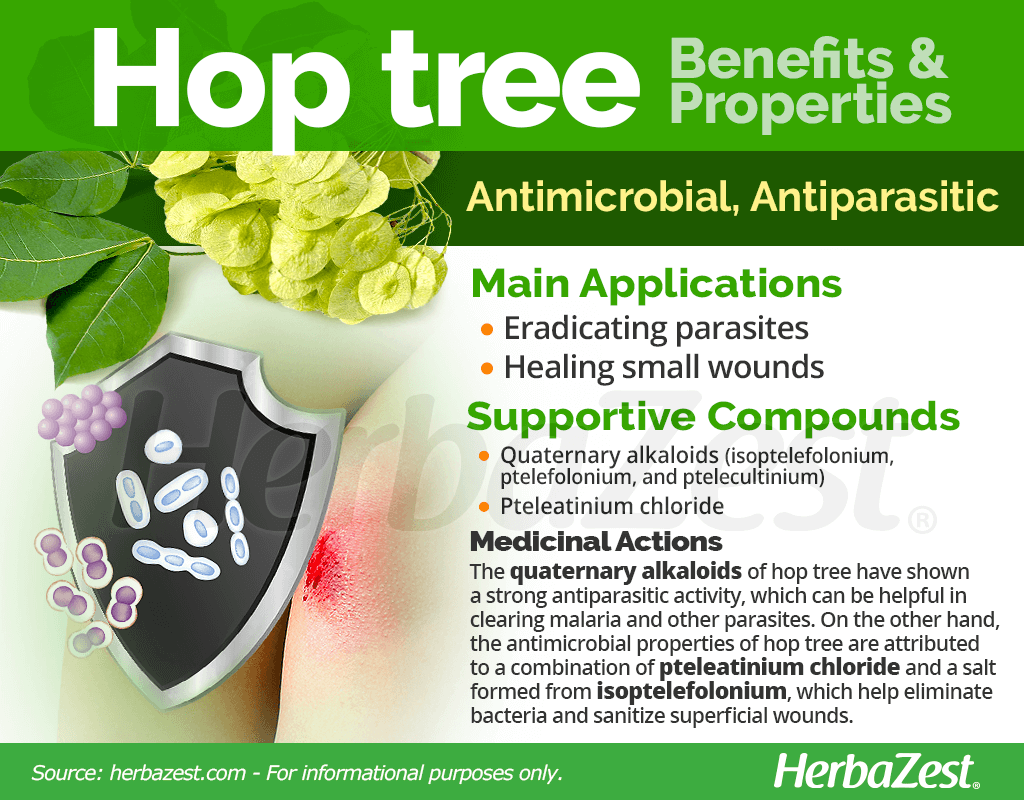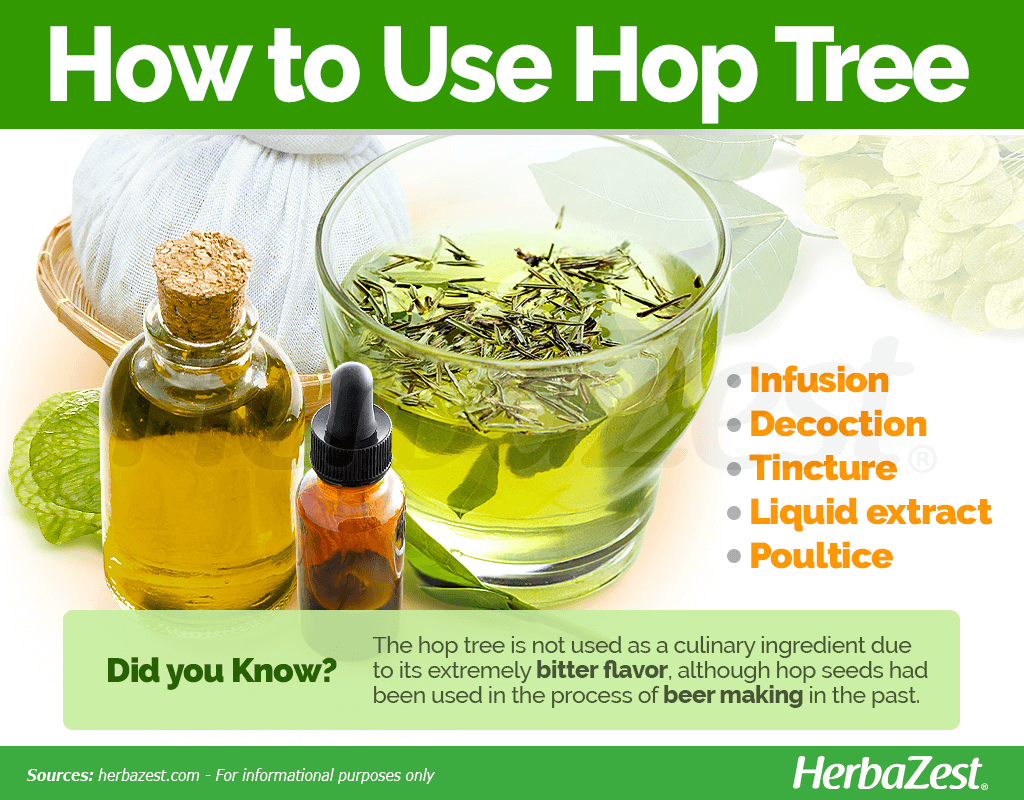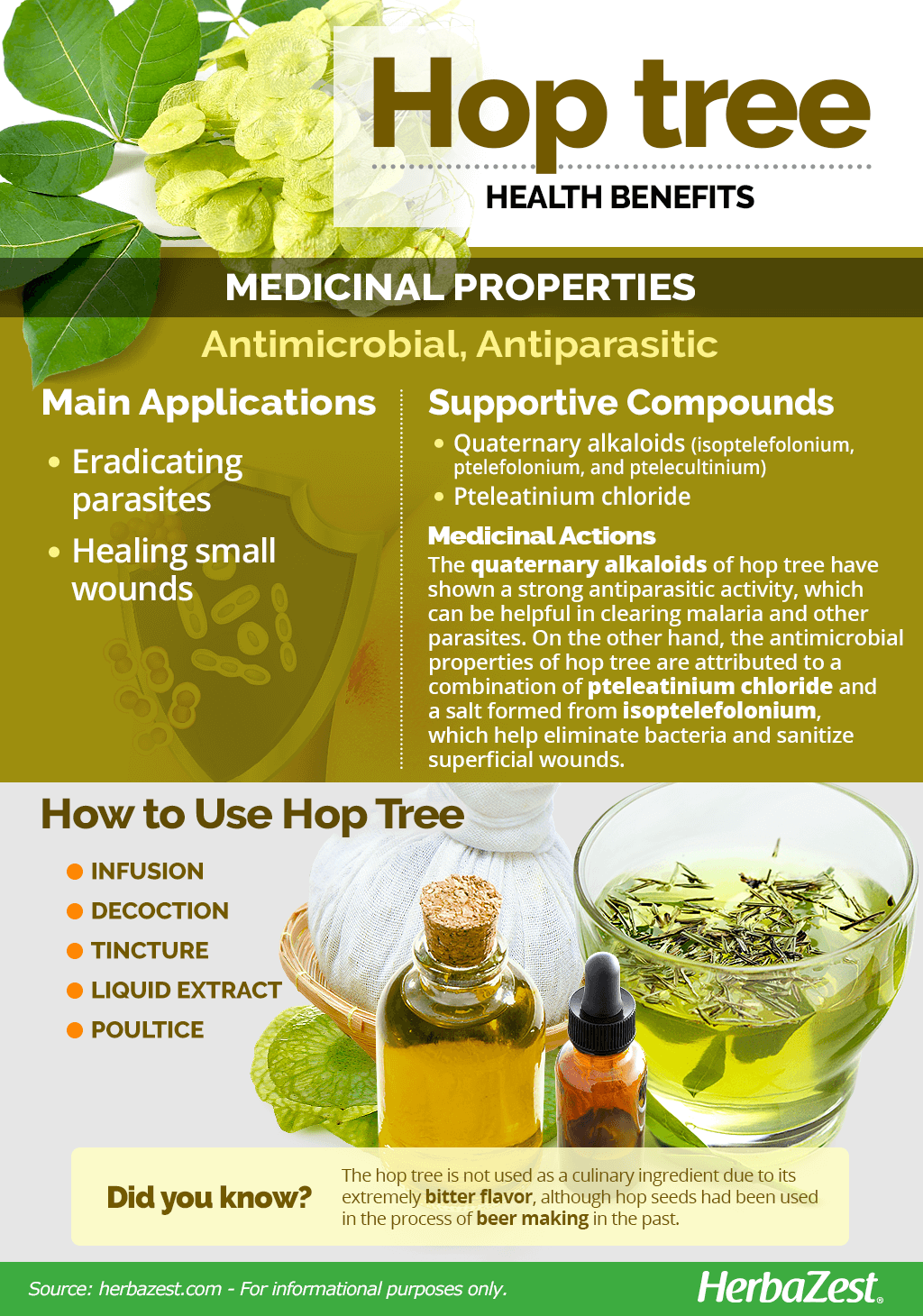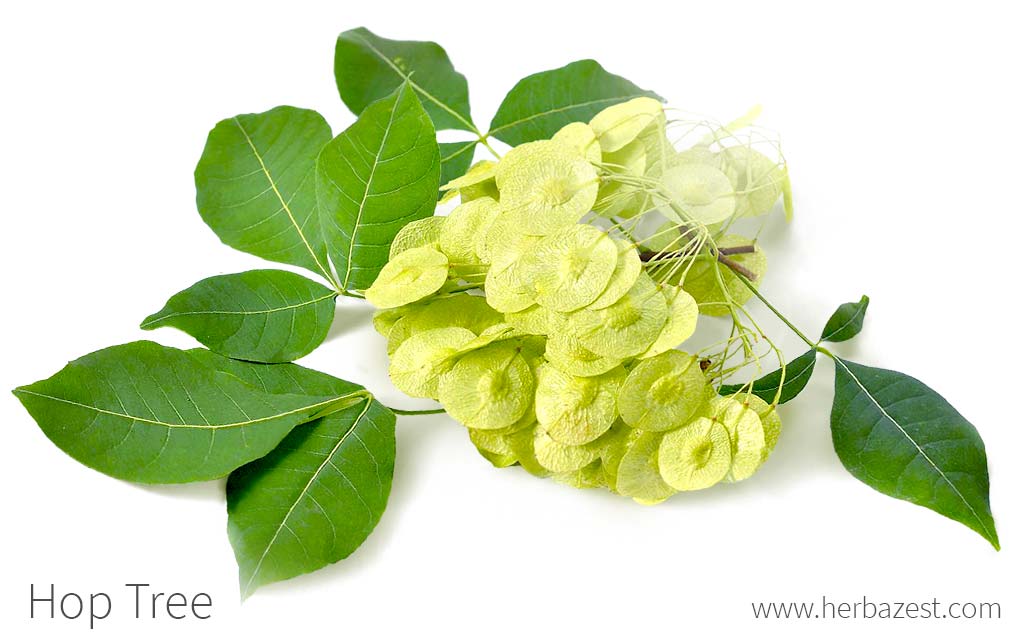The hop tree is native to North America, but it has been introduced to and now grows in many European countries as well. Also known as wafer ash and hopseed tree, it was popular among early Americans as a substitute for hops in beer making, but today it is more commonly grown because it is a host for the giant swallowtail butterfly. The health benefits of hop tree have found traditional uses and have been the subject of many scientific studies.
Hop tree Medicinal Properties
Health Benefits of Hop tree
The medicinal properties of hop tree have been known for hundreds of years. Scientific research suggests that hop tree can be helpful for:
Eradicating parasites. Hop tree is effective as a treatment for parasites and can even help to cure malaria.
Healing small wounds. The antimicrobial properties of hop tree make it useful for preventing infections in skin wounds and abrasions.
Hop tree has also been traditionally used to treat asthma, dyspepsia, and lack of appetite; however, there is no scientific research that supports these uses.
How It Works
Three quartenary alkaloids found in hop tree: isoptelefolonium, ptelefolonium, and ptelecultinium, have been shown to possess strong anthelmintic activity, and they are likely to be helpful in treating malaria and other parasites.1
Pteleatinium chloride and a salt formed from isoptelefolonium both possess strong antimicrobial activity, which can help eliminate bacteria and keep wounds safe from infection.2,3
Other herbs with antiparasitic properties are achiote and neem, whereas sweet wormwood has shown antimalarial properties. On the other hand, cardamom, calendula, horsetail, and tea tree, have strong antiseptic and antimicrobial actions.
Side Effects & Cautions
The safety of hop tree is undetermined. It is known to cause photosensitivity, or extreme sensitivity to sunlight, when used topically, so care should be taken to protect skin from the sun after use.
There's not enough information about medical interactions with hop tree. For this reason, it is not recommended for those who are pregnant or breastfeeding. A doctor should be consulted before beginning a regimen with wafer ash, and it should not be used instead of prescribed medications for parasites or infections.
- Medicinal action Antimicrobial, Antiparasitic
- Key constituents Isoptelefolonium, ptelefolonium, ptelecultinium, pteleatinium chloride
- Ways to use Decoctions, Hot infusions/tisanes, Liquid extracts, Tincture, Poultice
- Medicinal rating (2) Minorly useful plant
- Safety ranking Safety undetermined

How to Consume Hop tree
The hop tree, hopseed tree, or wafer ash, is not used as culinary ingredient due to its extremely bitter flavor. In the past, hopseeds were a substitute for hops in the process of beer making, but this use did not continue once hops became readily available in North America. The best way to reap the health benefits of hop tree is through medicinal preparations.
Herbal Remedies
Infusion. An infusion of hop tree is generally made from the bark or roots of the tree, which are mostly helpful for treating parasites.
Decoction. A decoction is a more concentrated way to reap the medicinal properties of hop tree. It is especially helpful for malaria and other parasites.
Tincture. This is a more potent mixture. A few drops of hop tree tincture should be diluted in a glass of water to receive its antiparasitic and antimalarial benefits.
Extract. Hop tree liquid extract can be taken internally to help treat parasites, but it can also be added to a salve or ointment, and applied externally to assist in healing small wounds.
Poultice. A poultice of hop tree can be applied to the skin to help prevent infection and soothe skin ailments, especially small wounds.
- Edible uses Beverage
- Taste Bitter

Growing
The hop tree takes up more space than most plants and is not commonly chosen for small gardens. However, it can be a beautiful ornamental for bigger areas.
Growing Guidelines
The hop tree can be grown from seeds, but it is more commonly propagated by budding, layering, or grafting.
This tree prefers well-drained soil that can be either clay, sand, or loam.
While the hop tree can tolerate slightly alkaline soils, it prefers soils that are neutral or acidic. It can tolerate a pH range of 5.5 - 7.8.
The hop tree can be planted in full sun, but grows best in areas with partial to full shade.
It requires very little water, as it is a drought resistant tree. Overwatering could cause damage to the roots.
The hop tree thrives in hardiness zones 4 - 9.
The flowers of hop tree bloom in midsummer.
The bark of hop tree is very weak and tends to droop, so it may require pruning to strengthen its structure as well as for clearing away any unwanted low-hanging branches.
The hop tree may be afflicted by pests like tree-hoppers, but they are unlikely to cause long-term or lasting damage. The most common diseases to affect this tree are leaf spot and rust.
More detailed information about growing hop tree can be found in the herb garden section.
- Life cycle Perennial
- Harvested parts Roots, Leaves, Bark
- Light requirements Full sun, Partial shade, Full shade
- Soil Light (sandy), Medium (loam), Loamy sand, Heavy clay, Well-drained
- Soil pH 5.6 – 6.0 (Moderately acidic), 6.1 – 6.5 (Slightly acidic), 6.6 – 7.3 (Neutral), 7.4 – 7.8 (Slightly alkaline)
- Growing habitat Temperate climates, Warm climates
- USDA Plant Hardiness Zones 4a, 4b, 5a, 5b, 6a, 6b, 7a, 7b, 8a, 8b, 9a
- Planting time Early spring
- Propagation techniques Layering, Budding, Grafting
- Potential diseases Leaf spot, Rust
Additional Information
Plant Biology
The hop tree is a deciduous species native to North America. It grows up to 15 feet (4.5 m) tall and has a spread of 10 - 15 feet (3 - 4.5 m). Its dark green, shiny leaves are generally four to six inches (10 - 15 cm) long. Its flower buds, greenish-white in color, appear during midsummer, and blossoms are followed by fruit that resembles flat, round wafers, each of which being one inch (2.5 cm) in diameter.
The hop tree has a number of other colloquial names, including wafer ash, stinking ash, hopseed tree, swamp dogwood, skunk-bush, potato-chip tree, quinine-tree, wingseed, ague bark, and pickaway anise.
Classification
The hop tree (Ptelea trifoliata), is a member of the Rutaceae family, which contains approximately 160 genera, including the Citrus genus, famous for species such as lemon, lime, grapefruit, and orange.
Varieties and Subspecies of Hop Tree
Ptelea trifoliata is generally considered to be the only member of the Ptelea genus, but botanists have recognized at least six natural variations: P. trifoliata ssp. trifoliata, P. trifoliata ssp. angustifolia, P. trifoliata ssp. polyadenia, P. trifoliata ssp. pallida, and P. trifoliata ssp. baldwinii. Each subspecies is native to a different area of North America.
Historical Information
The hop tree is native to North America and was likely used by Native Americans to create herbal remedies, as well as possibly used as a condiment. It started being purposely cultivated in 1784 and became popular for a short time as a substitute for hops in beer making. However, the introduction of hops into North America largely eradicated that use of the hop tree.
Popular Beliefs
During the early colonial period in the United States, it was widely believed that Native Americans used the hop tree to make a preparation in order to poison the tips of arrowheads.
Other Uses
Landscaping. Nowadays, the hop tree is mostly cultivated as an ornamental species, although it may also be grown to facilitate the reproduction of the giant swallowtail butterfly, a critically endangered species.
The hop tree is a useful medicinal herb, and promising scientific studies suggest it may grow in popularity due to its antiparasitic properties.
Sources
- Missouri Botanical Garden, Ptelea trifoliata
- Texas A&M Agrilife Extension, Wafer Ash
- University of Arkansas, Wafer Ash (Hop Tree)
- University of Florida, Ptelea trifoliata: Common Hoptree
Footnotes
- Rutgers. (2012). Antiplasmodial and phytochemical investigation of traditionally used antimalarial plants of the United States. Retrieved March 22, 2023, from: https://rucore.libraries.rutgers.edu/rutgers-lib/38785/}
- International Journal of Antimicrobial Agents. (2009). A study of the antimicrobial activity of selected synthetic and naturally occurring quinolones. Retrieved March 22, 2023, from: https://pubmed.ncbi.nlm.nih.gov/19748233/
- Lloydia. (1975). Antimicrobial agents from higher plants. The quaternary alkaloids of Ptelea trifoliata. Retrieved March 22, 2023, from: https://pubmed.ncbi.nlm.nih.gov/1094214/





